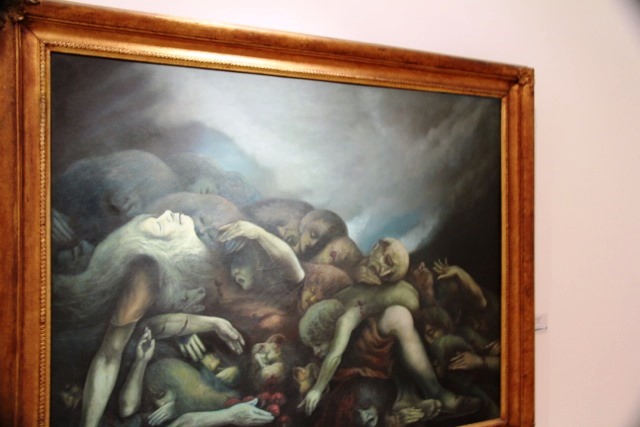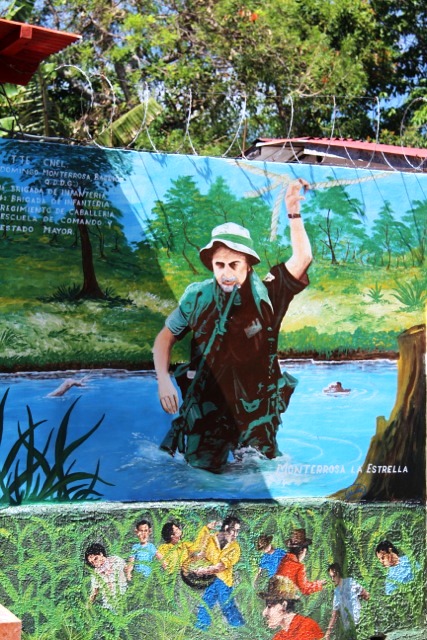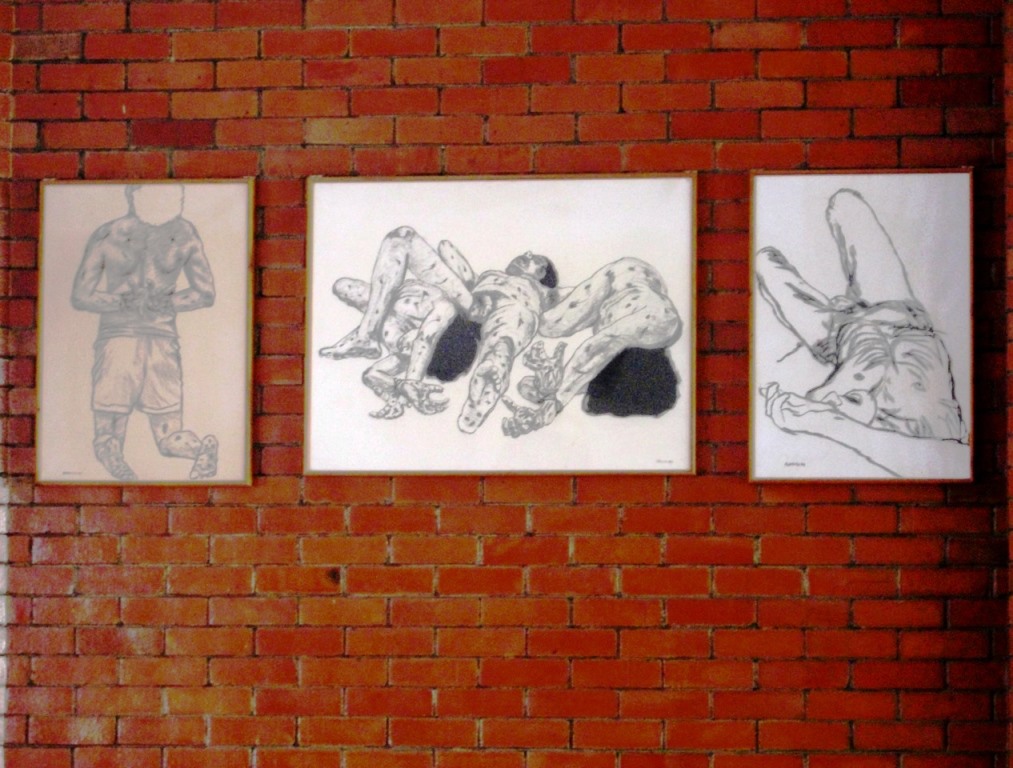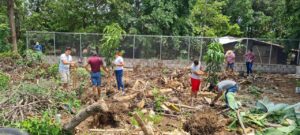The Story of Maria Dolores Dubon Alfaro
“All I could do was to thank God that we had survived. I realized that if we had taken a different way, we would have been massacred.”

Editor’s Note: To those who are familiar with the history of the Salvadoran civil war, the massacre at the Sumpul River on May 14, 1980, is common knowledge. This horrendous attack of mostly women and children executed trying to save themselves while fleeing El Salvador’s military at the border into Honduras was met with military on the opposite side of the river blocking their path to freedom. Many drowned or were strafed by helicopters above.
What I DIDN’T know before talking with Maria, who was just a young girl when she became a moving target in this situation, was that this was NOT a single day’s event. There was actually a whole series of massacres occurring up and down this river and its tributaries over a period of time. How any of these villagers managed to survive is miraculous. The fact that some of the survivors are willing to talk about their experiences may be related to their need to testify and witness.
How old were you when this unforgettable scene occurred?
I was nine years old. My birthday is September 15, 1971. The same day as the celebrated day, May 14, 1980, my family was located in a different place, from Guarjila in southeast Chalatenango department when this happened to us.
Can you describe the events of that day?
There was a series of coordinated military massacres occurring about the same time. My mom noticed that there was an unusually large number of helicopters and military beside the river. She was trying to decide what to do because they made her uncomfortable. The group of guerrillas was defending us civilians, but the military began attacking. The guerrillas were trying to help us get across a tributary of the Sumpul River which was still within El Salvador. However, there was so much fighting. In the village of Los Amates, there were more than 500 civilians. A scout would fire when the military was approaching in order to alert the people.

Sumpul River Massacre by Carlos Canas, Marte Museum
What was the plan when you heard his shot?
We were to run in the direction toward the river. Guerrilla troops were trying to assist us but didn’t realize that military were blocking our way. However, when we got near the river, there were military on the other side also. We were sandwiched in between. Many people drowned in the river.
Where was your family during this scene?
I lost my mother in this chaos of everyone running and crying. Many people were shot in the legs. Some would cry out, “If you can’t help me, please kill me.”
How did you reach the other side since you were so young and small?
I held onto my cousin’s belt loops of his pants as he crossed the river. I found my mother who had taken the hands of three other girls whose parents had been killed by soldiers in another village. Her sister-in-law also made it across.
How long prior to these massacres beginning did people become fearful of their security and the military?
When I was about six or seven, soldiers came to our village oppressing us and doing scare tactics. One of the things they did was at the time of the sugar cane harvest, the soldiers waited for the youth and killed them to prevent them from joining the guerrilla movement. But they didn’t just shoot them. They would strip their skin and put it in the river. The river was filled with the blood of innocent people. And they would hang their bodies in the streets. My parents were angry and became very concerned for our safety.
Were the massacres always on a large organized scale like the one you remember?
No, they began more randomly and on a smaller scale. I remember there was one massacre in a small village that killed five women. One woman named Esperanza was nine months pregnant. The soldiers shot her in her stomach with an M60 weapon. She had five other children. When the soldiers put all the children in one room, my one cousin, who was very smart, dug a hole and was able to escape. Her mother was killed, though. The soldiers lined up the people, and my aunt got shot in the head when she tripped. My sister-in-law who had three children was shot in the breast.
On another day there was another massacre killing five women. These events happened sporadically in different villages.
Why was this area so heavily targeted? Wasn’t it simply a rural community of farmers?
The military believed the people in this area belonged to the UTC campo – Unidad de Trabajadoreo del Campo – a labor union. The unions were a big threat to the military during this time.
Is this difficult for you to re-tell to people like us?
I want to say that this helps me, but it is also painful to share my story with delegations. To tell all the details would take a long, long time.
Do you know how many survivors there were at the massacre in which you were involved?
No, I’m not sure. People scattered in all different directions.
What were you feeling during this time of these persecutions when your life was so tenuous?
I don’t know why so many innocent people had to be killed. I cannot understand that. When I crossed the other side of the river, my cousin asked me if I wanted to continue to save more lives. I wanted to wait for my mother, so I waited beside a tree. I saw people running, including my mom and the three children she saved. All I could do was to thank God that we had survived. I realized that if we had taken a different way, we would have been massacred.

A marvelous wall mural captures the complexities of life in El Salvador.
What happened to your family after that point?
There are 15 of us children altogether in my family. Some of them died as children. Some of the children relocated to Mesa Grande Refugee Camp set up by the United Nations. Like my mother said, “The civil war is not for cowards.” My mom and I remained here in El Salvador. My mom was a midwife and her skills were needed and people begged her to stay. Two of my brothers were killed during the civil war when they returned from Honduras in 1988. One of my brothers took revenge and was killed in 1989. My dad died fifteen years ago.
Do you attend the May 14th annual commemoration of the Sumpul River event?
Yes, when I can. My mom always attends.

An artist commits to paper scenes from those terrible days.
Have you had lingering health effects or psychological effects from the trauma you experienced from the war?
Both. I’ve had nightmares of the civil war. I’ve also lost my hearing in one ear as a result of the bombing. I have some visual problems also.
Have you had any treatment for the psychological trauma?
No, other than sharing my experiences with delegations and people like you which helps.
What is your current family situation?
I am a single mother of two daughters and one son.
Has faith played a role in your life? If so, how?
Yes, my mother told us we have to believe in God and that only God knows why these things happen.
Has anything positive come as a result of the civil war?
We have gained some benefits with the help of people like Jon Cortina. We have built about 50 houses and have worship services to learn. I am thankful for CRISPAZ for help with medical care for my vision problems.
Editor’s Note: An unexpected discovery during today’s interview was that Maria’s mother was the midwife who delivered our translator! We got some laughs and good release from the heaviness of the emotional interview over that bit of news.


